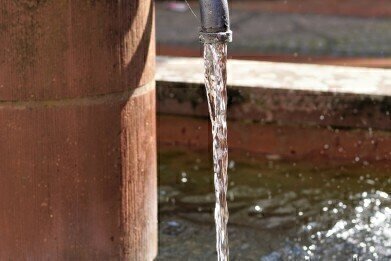Water/Wastewater
Is US Water Safe?
Mar 20 2018
Access to clean drinking water: it’s a basic human right and one of the barometers of a developed country and a civilised society. It’s concerning to learn, then, that almost 10% of public water systems in the US have been violating legal standards for health and safety over a 30-year period.
The news comes as a result of a new study which is the first to analyse trends in drinking water supply violations over an extended period of time. The research concluded that up to 45 million US citizens are exposed to water which violates health standards on any given year.
Alarming statistics
Published in the journal Proceedings of the National Academy of Sciences, the paper examined instances in which water quality standards had been violated in 17,900 public water systems between 1982 and 2015. As such, it represents the first time that anyone has given a comprehensive overview of how often such violations have occurred.
The authors found that on average, 8% of those systems violated health standards, with the figure fluctuating between 3% and 10% in any particular year. Although that figure doesn’t seem too concerning, those violations resulted in between 9 million and 45 million Americans drinking water that did not meet adequate health standards every year. Unsurprisingly, the violations were more likely to occur in rural regions with low average incomes.
Causes of the problem
The contributing factors to this water quality issues are manifold. On the one hand, an aging infrastructure can impair the system’s ability to filter out unwanted metals and chemicals, as happened in Flint in 2014, when 98,000 residents of the county were exposed to unsafe concentrations of lead.
Climate change can also play a part. Lake Erie fell prey to dangerous blue green algae bloom in the same year, compromising water supplies in nearby Toledo, as a result of contaminated run-off and weather anomalies. Meanwhile, accidents and spillages can also tarnish water supplies, and the build-up of chemicals such as bromine and chlorine from household cleaning products can also have a detrimental effect.
The bigger picture
While the data might come as a shock to the everyday American, the good news is that not all of those violations necessarily mean that the water was a threat to human health. States differ on the water monitoring systems they use and how exactly they measure water quality, making it difficult to gain a comprehensive overview. What’s more, the Environmental Protection Agency (EPA) use the number of “total coliforms” as one of its criteria.
These total coliforms are bacteria – but they are not harmful to humans. An excess of this kind of bacteria is the most commonly reported violation, which does skew the data somewhat. However, just because the bacteria isn’t harmful to humans itself, it doesn’t necessarily mean the water is safe to drink. Total coliforms can be an indicator of the existence of other bacteria, viruses and parasites in the supply, which do endanger human health.
Therefore, it’s difficult to say with certainty the extent of the problem from this study alone – but one thing’s for sure: the problem definitely does exist.
Digital Edition
IET 34.2 March 2024
April 2024
Gas Detection - Biogas batch fermentation system for laboratory use with automatic gas analysis in real time Water/Wastewater - Upcycling sensors for sustainable nature management - Prist...
View all digital editions
Events
Apr 22 2024 Hannover, Germany
Apr 22 2024 Marrakech, Morroco
Apr 23 2024 Kuala Lumpur, Malaysia
Apr 23 2024 Kintex, South Korea
Apr 23 2024 Edmonton, AB, Canada


















